Learn all about How to Propagate Snake Plant with this step-by-step guide. We include everything you need to know and any tips you might want to make it easier.
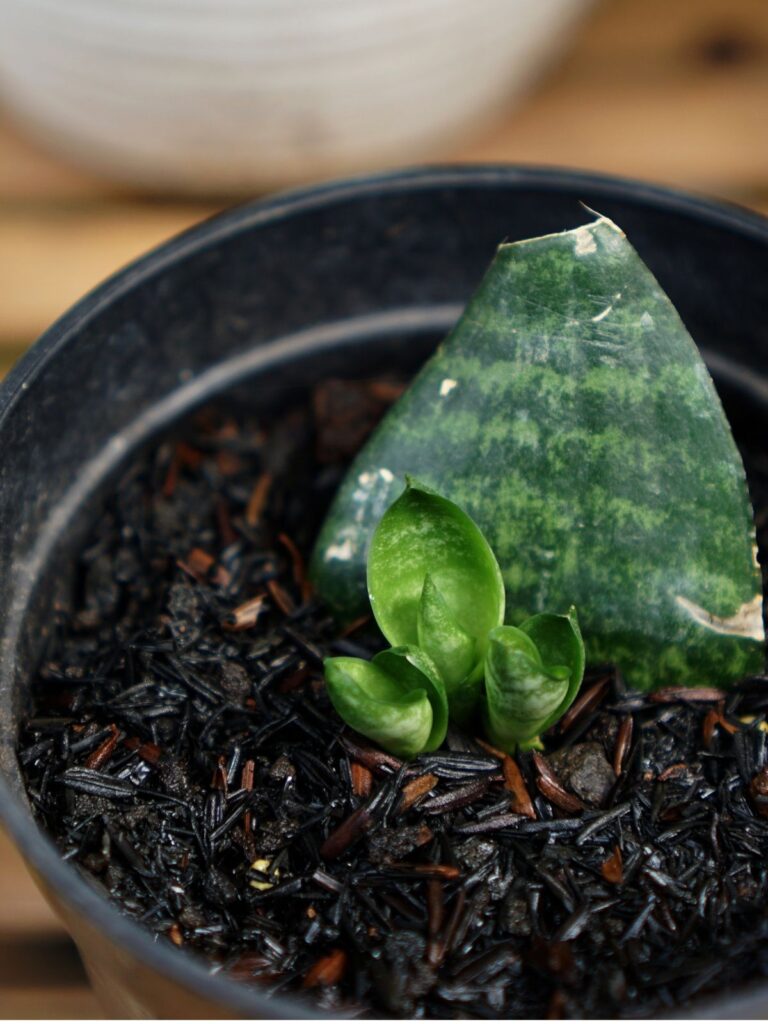
Snake plants (Sansevieria) make wonderful houseplants.
These low-maintenance, air purifying plants are perfect for beginners and propagating them might just be easier than you might think.
Propagating snake plants is a fun and budget-friendly way to expand your plant collection.
Table of Contents
Tips for Success
Here are some tips to keep in mind when propagating your snake plant:
- You can propagate and make plants anytime. Although, it’s better to propagate the snake plant during it’s growing season which is spring and summer.
- Make sure the parent plant is healthy.
- Remember which side of the leaf cutting is the top and which is the bottom.
Different Methods of Propagating
There are several different methods of propagating a snake plant.
You can take cuttings and propagate the cuttings in soil or in water.
You can also separate the pups off the snake plant and repot those.
How to Take Cuttings
First you need to take your cuttings to propagate. You’re going to need a clean sharp pair of scissors or clippers for this.
Choose a healthy, mature leaf from the parent pant. Cut this leaf at the base of the snake plant with a clean, straight cut.
Once you have the leaf, you’re going to cut the leaf into about 4″ sections. This step is optional, but you can cut a reverse “V” shape (you can see in the pic below) on the bottom end. This makes it so the top part is a “V” shape and the bottom will grow roots down each side of the reversed “V”.
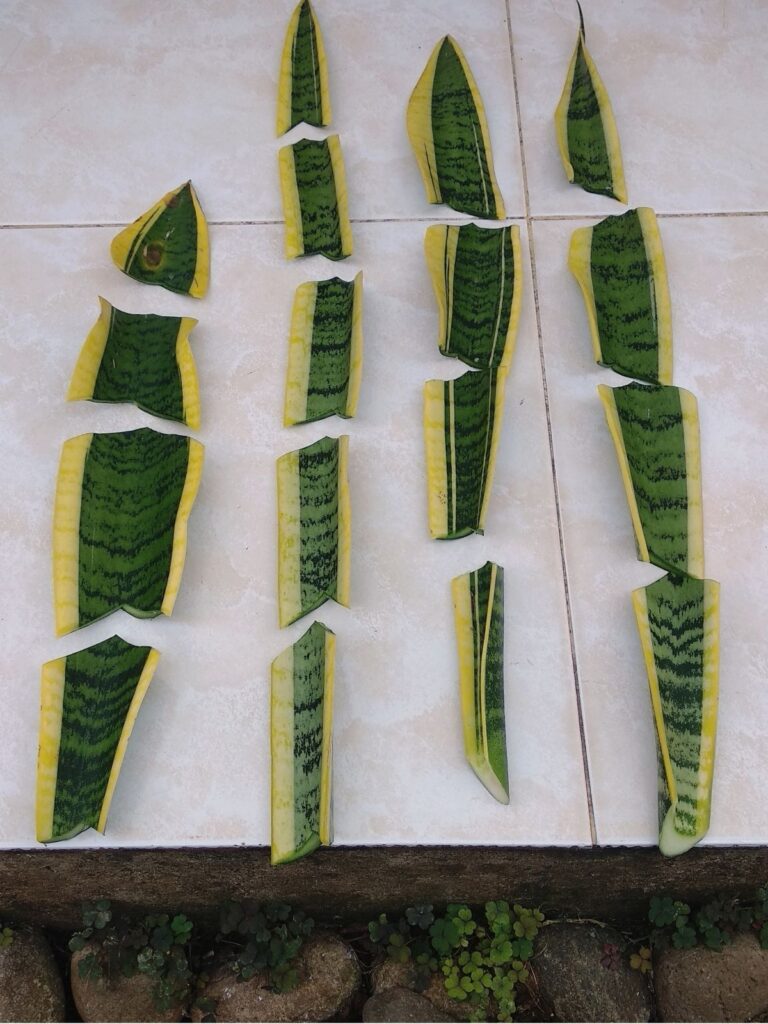
Make sure to remember which end of the leaf section is the bottom and which is the top so you are successful when propagating.
Dry the Cuttings
Allow the cut end of the leaf to dry and callus for 2-3 days in a warm, well-ventilated area. By allowing it to dry it will prevent the leaf from rotting when it’s planted.
How to Propagate Snake Plant in Soil
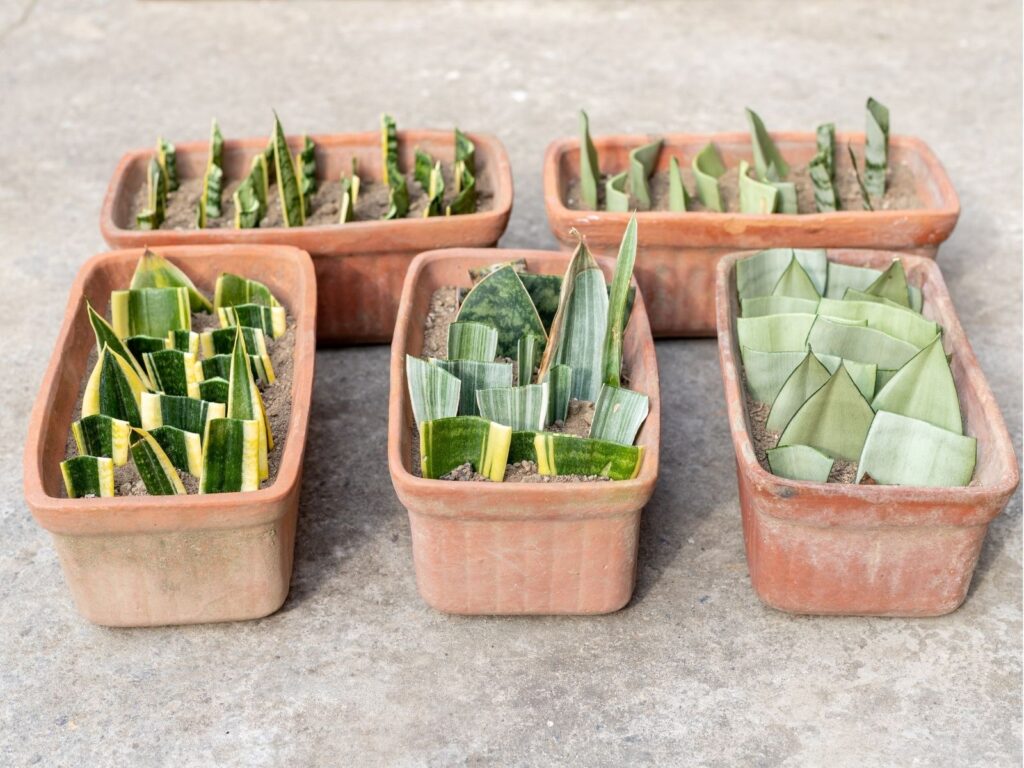
Fill your pot with well-draining potting mix. Stick the bottom end of the leaf about 1-2 inches into the soil.
Place the pot with cuttings in it in a warm, brightly lit area, but avoid direct sunlight. Keep the soil moist and not wet.
You can sick one piece per pot or do several in one pot.
How to Propagate Snake Plant in Water
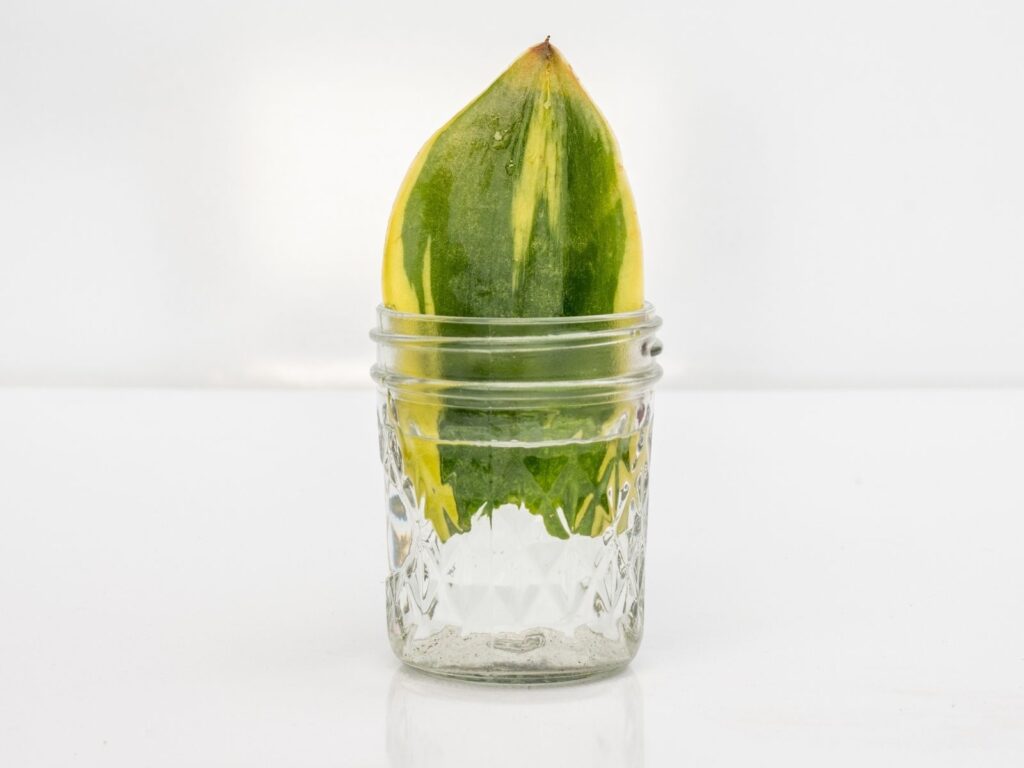
Use a small container filled with water. Place the cuttings (bottom side down), in the water. Make sure the top end is out of the water.
The water shouldn’t be too high. Make sure the water covers the roots and isn’t too high up on the cutting.
Just like with the soil propagation, place the container of water with the cuttings in a warm, brightly lit area, but avoid direct sunlight.
Change the water every few days to prevent bacterial growth.
Transitioning to Soil
Wait until the roots are at least an inch long before transferring them to a pot filled with well-draining potting soil.
Be gentle during the transplanting process to avoid damaging the delicate roots. You’ll want to plant them about an inch deep.
Signs of Successful Propagation
Root Development: The first sign of successful propagation, whether in water or soil, is the development of roots. In water propagation, these will be visibly growing from the cut end of the leaf. In soil, you may notice resistance when gently tugging on the leaf, indicating root growth beneath the surface.
Pup Formation: Pups are young shoots that emerge from the soil near the base of the parent leaf cutting or from the sides of the cutting itself. These are essentially baby snake plants starting to grow on their own, and their appearance is a clear sign of successful propagation.
Understanding Pup Formation
Timing: Pups may not form immediately and can take several weeks to several months to appear after the roots have developed. The timing can vary greatly depending on environmental conditions, the health of the cutting, and the propagation method used.
Conditions for Pup Formation: Pups are more likely to form in conditions that mimic the parent plant’s ideal growing environment—moderate to bright indirect light, warm temperatures, and a dry, well-draining soil mix.
Transplanting: Generally, it’s advisable to wait for pups to form before considering transplanting, especially if you started with water propagation. This makes sure that the new plant has a strong enough root system to support itself in soil and can continue growing well after the transition.
Pup Formation Variability: Not all cuttings will produce pups, and some may only develop roots. Factors such as the health and age of the parent leaf, the cutting’s size, and environmental conditions play a significant role in whether pups will form.
What If Only Roots Grow?
Patience May Still Yield Results: Even if a cutting has only developed roots for a long time, there’s still a chance pups may eventually form. Continuing to provide optimal care can sometimes lead to late surprises.
Consideration for Future Attempts: If a cutting fails to produce pups after a significant amount of time, it might be worth considering different propagation methods, selecting different parts of the plant for cutting, or adjusting the environmental conditions to better support growth.
Tips for Success
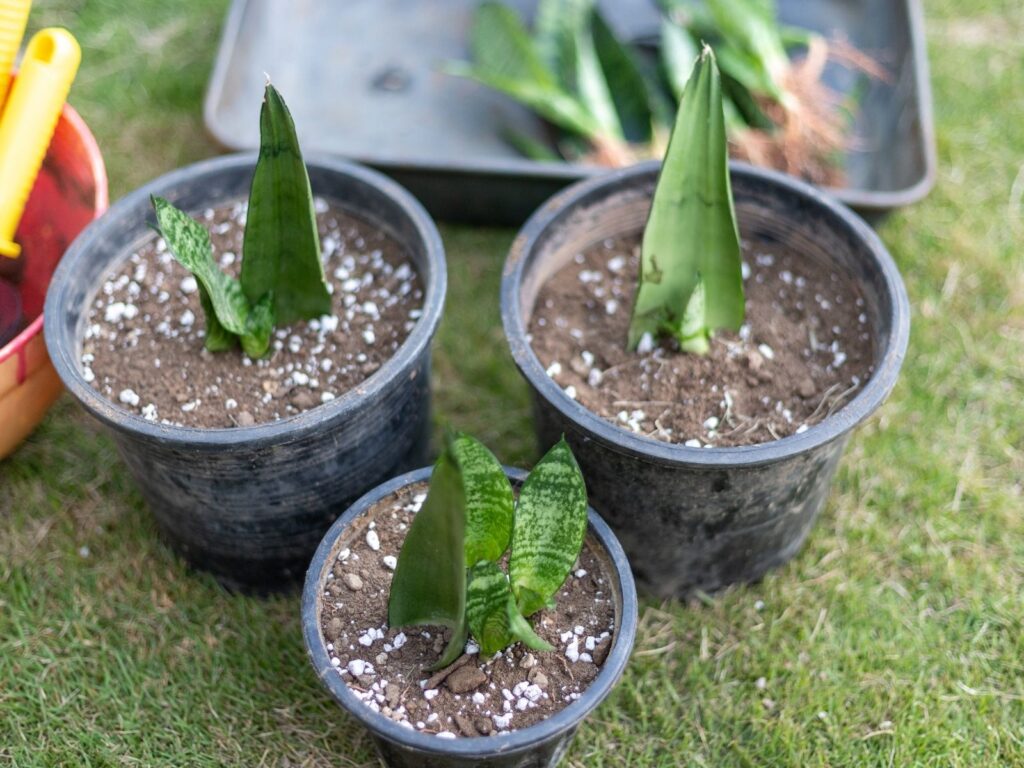
- If you are propagating a variegated snake plant, the propagated plant won’t be variegated. In order to keep the variegation on the plant, you’ll need to separate the plant.
- Make sure you have patience. Root development can take several weeks to a few months. It can take months for the pups to show up. If you have roots – this is good. Give it more time for the pups to shoot out.
- If you are wanting to propagate the snake plant in water, make sure to let the cuttings dry out for a few days to heal over first. Otherwise, they might rot.
- To encourage quicker root growth, you can add a pothos cutting to the water if you’re water propagating your snake plant. The pothos will naturally add in rooting hormone to the water.
- Another want to get faster roots when water propagating is to suspend the leaf cutting in the water so there is room for the roots to grow easily.
- You can dip the cuttings in cinnamon powder. Cinnamon is a natural fungicide, so it’ll help prevent rot as well as it helps to boost root growth.
- Make sure to change out your water often – every 4-7 days.
Good luck with propagating your snake plant!



